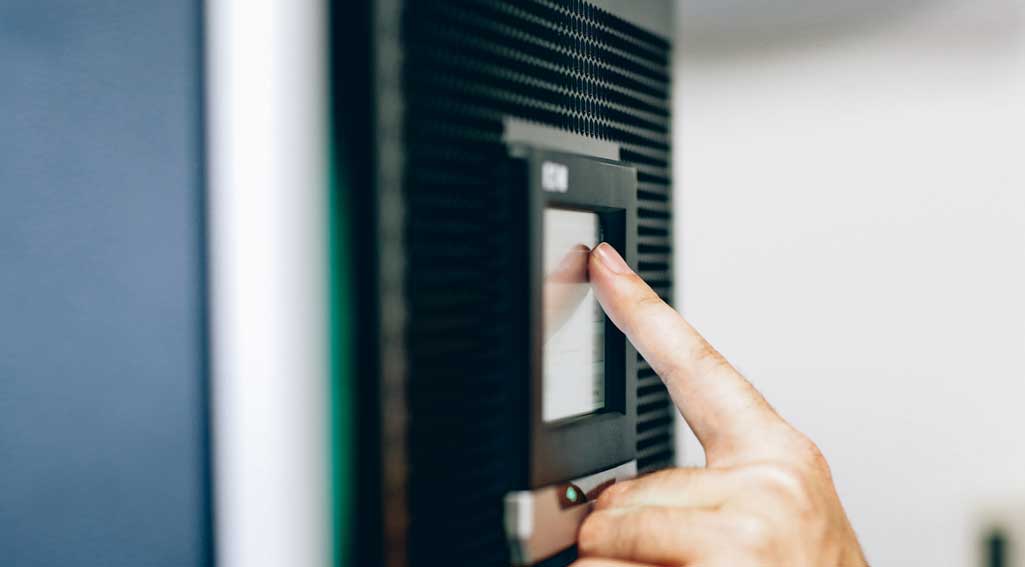- Homepage
- /
- Uncategorized
- /
- What Is UPS Efficiency and How Is It Calculated?
- Homepage
- /
- Uncategorized
- /
- What Is UPS Efficiency and How Is It Calculated?
- Homepage
- /
- Uncategorized
- /
- What Is UPS Efficiency and How Is It Calculated?
What Is UPS Efficiency and How Is It Calculated?

UPS efficiency is a big deal. The more efficient your UPS, the cheaper it is to run. Manufacturers provide an efficiency rating for each device, but can you trust them? In this article, we describe what UPS efficiency is, how you can calculate it and why it’s an essential consideration when buying a new or replacement critical power protection system.
What is UPS efficiency?
The operating efficiency of a UPS is a calculation of how much power you have left after the UPS has taken enough power to run itself.
For example, if your UPS has an efficiency rating of 97%, it demands 3% to run itself, with the remaining input powering the load (and any systems that are connected).
Advertisers of UPS systems provide UPS efficiency levels for each of their models, but they should be treated with caution. The published efficiency figures are based on the UPS unit running with a 100% full load.
But the real world doesn’t work like that. As the load requirements drop, as do efficiency levels – in some cases, significantly. A large UPS running a small load (40%, for example) may only be 85% efficient.
When comparing UPS systems and calculating UPS efficiency, there are two things you need to keep in mind:
- UPS systems have different efficiency rates
- UPS efficiency differs, depending on the load level
The energy efficiency of a UPS system is influenced significantly by its design. On paper, double-conversion systems (where the UPS converts power from AC to DC and then back to AC) should be less efficient than single-conversion systems, for example. However, manufacturers now produce UPS systems with a variety of modes that can deliver higher efficiency rates than ever before.
You will also find that energy efficiency increases when using a larger UPS. This is simply because the support power required to power the control electronics and other components is a much smaller proportion of the UPS’s total capacity.
Why UPS efficiency matters
It’s all about money.
The more efficient a UPS is, the cheaper it will be to run. Many of our UPS installations are designed to be in place for over ten years, during which you can make significant savings (or experience high extra costs).
It’s not just about power consumption saving. Low-efficiency UPS systems produce more heat, which needs to be cooled by an air conditioning system. The more efficient your UPS, the lower your air conditioning costs, and your utility power bill.
Modern UPS systems are highly efficient, delivering real-life performance that was unheard of even ten years ago. In the past, UPS performance levels rarely achieved 90%, and certainly not the 95%+ efficiency that operators can expect today.
New technologies used in UPS transformer-based systems and innovations such as ‘transformerless’ UPS systems are pushing the boundaries of what’s possible, and customers are benefitting.

How to calculate UPS efficiency
Manufacturers provide detailed information on the energy efficiency of their UPS systems under varying load conditions. You’ll see this displayed as an efficiency curve.
To make it as easy as possible to compare its products, critical power supply manufacturers have created their own UPS calculators. They all have slightly different names but work in the same way.
- Eaton has created its own UPS efficiency calculator for its makes and models.
- APC provides a UPS selector which can help you identify the most cost-effective solution for your server room.
- Riello UPS selector allows you to explore its range of models in detail, playing about with configurations to find the right model for you.
Energy efficiency is about saving money. If you’re handy with a calculator and have access to the figures you need, you can use this equation to calculate the annual running costs of operating your UPS at different efficiency levels.
(UPS kW Rating x Load % ) / UPS Efficiency) – (UPS kW Rating x Load % ) x (24×365) x kWh Price
To run the calculation, you’ll need to know how much you’re paying for your energy (kWh price) and the efficiency levels for load profiles. You should be able to find this information on your UPS manufacturers website.
What is ECO mode on a UPS and can it save me money?
UPS manufacturers are making great strides to improve the energy efficiency of their systems. This is a response to the increasing energy costs and pressure on operating budgets. But it’s also a reaction to the pressures of global warming.
Many UPS systems have an energy-saving (or ECO) operating mode that improves efficiency. When running, it operates as a line-interactive UPS. The load is powered by the bypass line. The inverter is dormant but ready to step in if there’s a mains supply fluctuation or failure.
In ECO mode, UPS systems can be up to 99% efficient. The downside is that it can affect reliability, so we advise you only use it during periods where critical business activities aren’t taking place or critical loads to your data center aren’t required.
Selecting the right UPS
The energy efficiency of your UPS is a crucial consideration, but there are other factors too, including size, performance and price. At Carter Sullivan, we provide a complete UPS service, including specification, installation and maintenance. It all starts with a free on-site survey. Book yours today.




